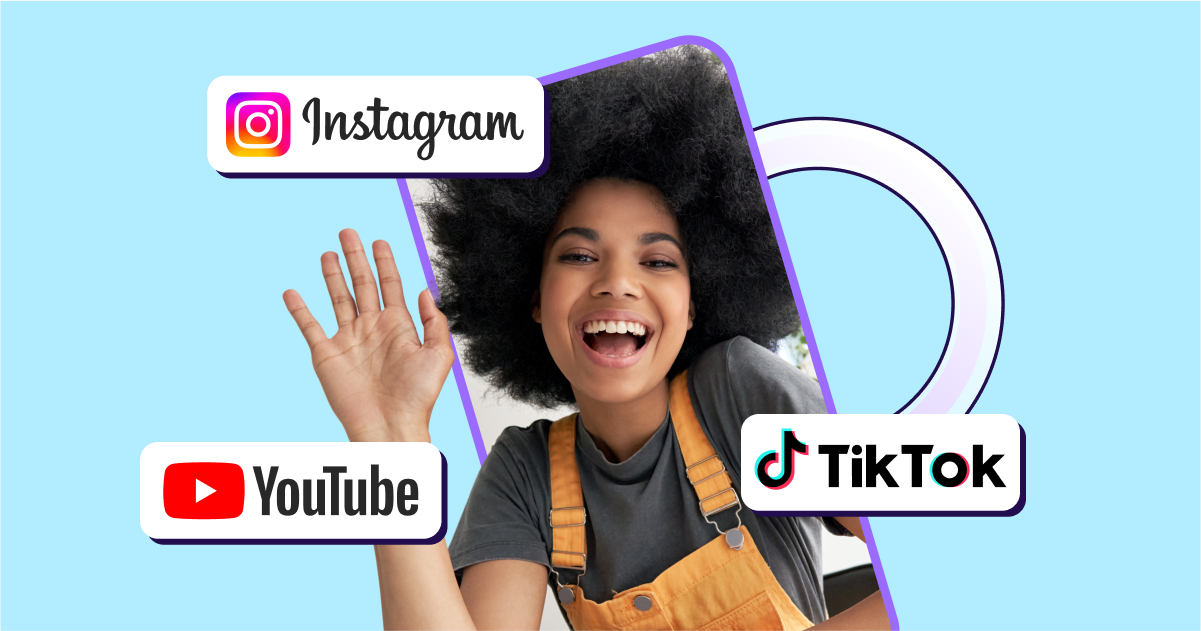
Be like Nike: how 8 leading apps boost ATT opt-in rates with pre-prompts
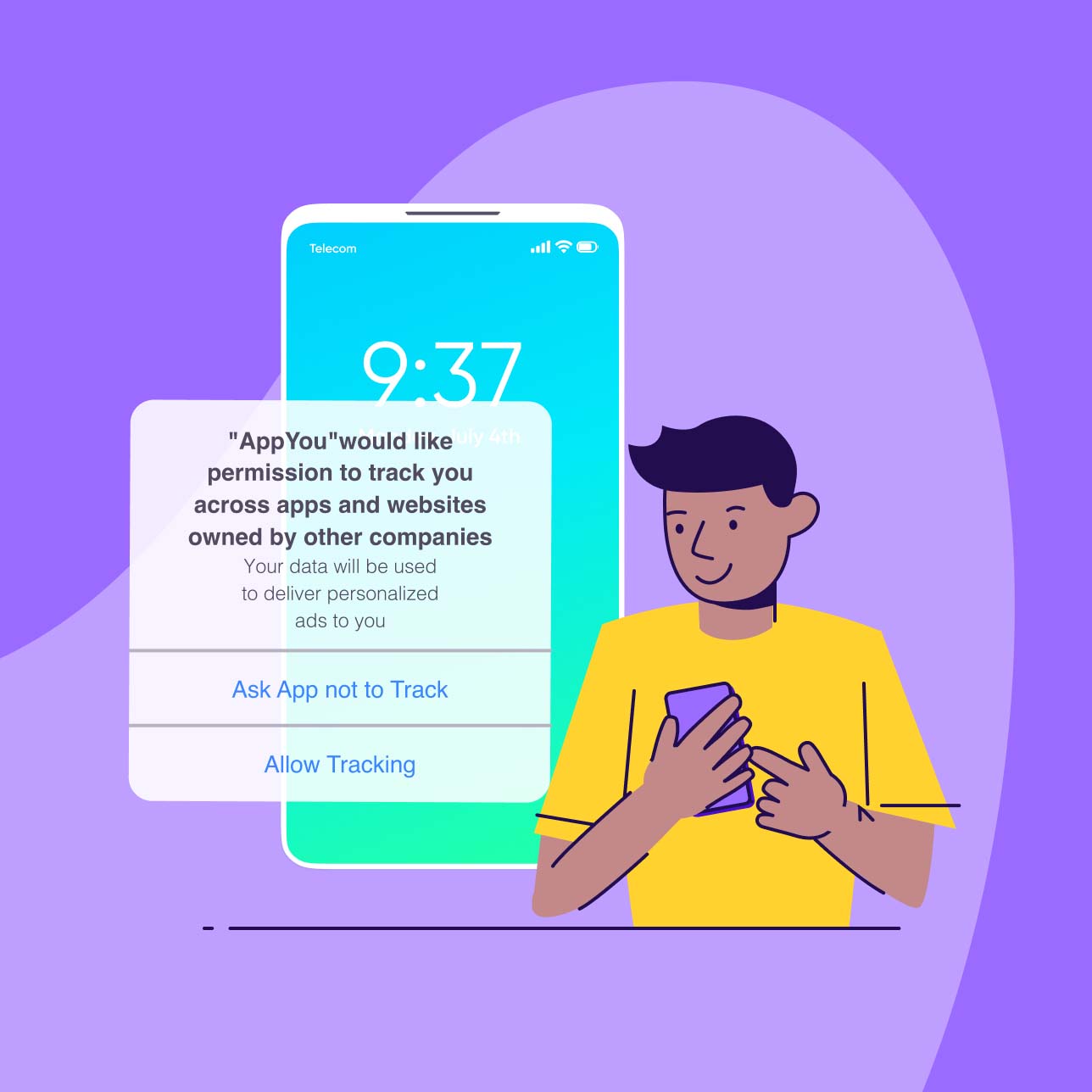
Are iOS users actually opting into app tracking?
Ever since Apple flipped the switch on their app tracking transparency (ATT) framework, we’ve benchmarked a large cohort of apps to answer that question. The results are better than expected.
Globally, 80% of apps have implemented the ATT prompt, while over 45% of users that see the prompt consent to being tracked. That means nearly half of users trust app owners enough to let them collect data as they click between apps and websites.
While we see the highest opt-in rates when the ATT prompt is shown upon first launch, there are a few ways developers can test to gain user trust. One tool many apps leverage is the pre-prompt. A pre-prompt is a popup message that apps can show users directly before Apple’s ATT prompt.
Unlike Apple’s prompt, the pre-prompt allows for a great deal of design and copy flexibility, giving developers the ability to personalize their tracking pitch.
How can you do it? Showing is better than telling, so we’ve rounded up creative pre-prompts from eight leading apps. Each example exposes the trust-building and educational strategies that keep users clicking the “allow” button.
HelloFresh highlights personalized experiences
With a slight tweak of the language, meal delivery service HelloFresh tells new app users what they’ll miss if they restrict tracking permissions.
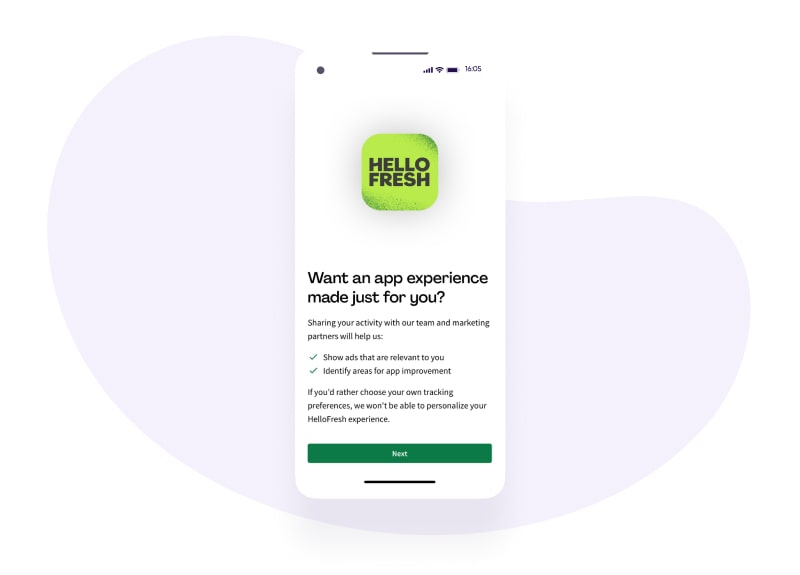
Why it works:
By telling users what they’ll miss out on, HelloFresh leverages loss aversion — the idea that the fear of loss is even stronger than the anticipation of gain.
What else this pre-prompt gets right:
The copy is user-centric. Instead of focusing on what HelloFresh wants (the ability to track their users), the pre-prompt headline, “made just for you?” keeps the user thinking about what’s in it for them.
Adidas makes it visual
The athletic footwear and apparel brand evokes a sense of teamwork in their ATT pre-prompt with a striking image.
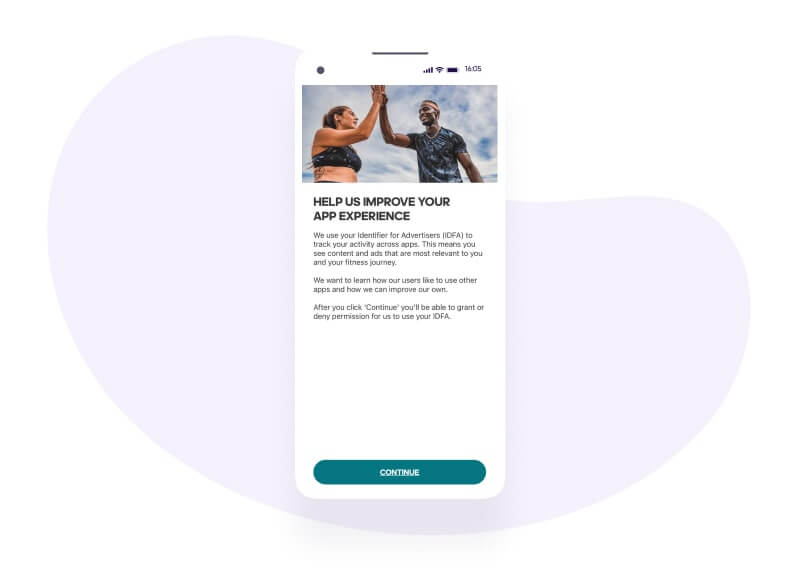
Why it works:
Science says visuals attract our attention quickly and aid in our decision-making process. MIT neuroscientists found that our brains can identify an image in a mere 13 milliseconds. While research from the University of Michigan proved that our brain’s visual processor (the visual cortex) actually has the power to help make decisions.
A pre-prompt with striking visuals can influence a user’s decision faster than they can click “Ask app not to track.”
What else this pre-prompt gets right:
The copy gives users a peek behind the tracking curtain, explaining IDFA and how the data collected will be used.
Nike’s perfect timing
Nike places the ATT pre-prompt at the end of onboarding, so there’s a little room for romance before they pop the privacy question.
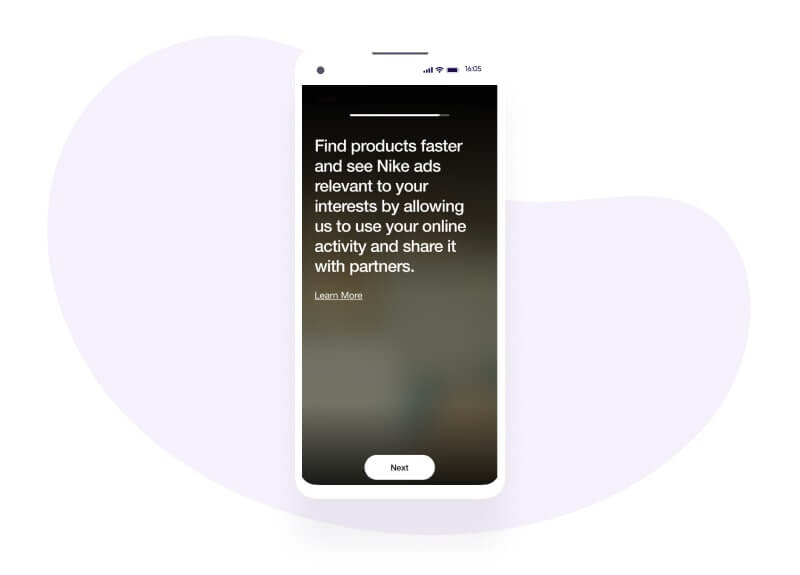
Why it works:
Apps can present the Apple prompt and pre-prompt only once, but they can do it at any time. And there are benefits to showing it at different stages of the user journey.
Nike’s choice to wait until the end of their onboarding sequence gives them more time to build a relationship and show the value of personalization before asking for users’ consent to track.
What else this pre-prompt gets right:
The “Learn More” link provides another opportunity to make users feel at ease through education.
Domino’s delivers the right tone
Domino’s is known for their fun, creative marketing, and their ATT pre-prompt leans hard on that playful tone.
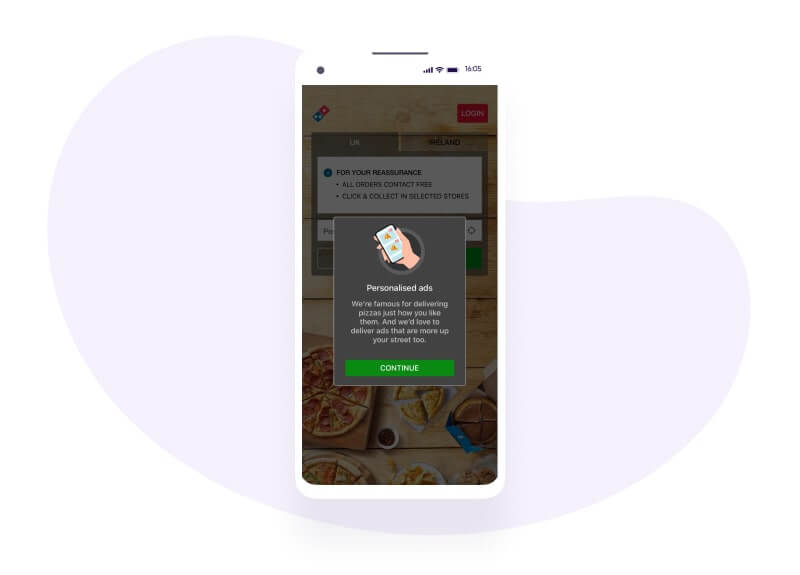
Why it works:
A consistent, interesting brand voice not only catches people’s attention, it also contributes directly to the bottom line.
Sprout Social’s survey noted that a third of consumers believe a brand’s distinct personality is what made them stand out. And 68% of marketers believe that brand consistency leads to as much as 20% of their company’s revenue growth, according to a Lucidpress study.
What else this pre-prompt gets right:
There’s no confusion in the copy. Domino’s clearly expresses one specific benefit of opting in. It’s easy for users to comprehend with a quick read.
Roku queues up an unexpected benefit
In their ATT pre-prompt, digital media player maker Roku tells users how opting in can actually cut down on annoying ads.
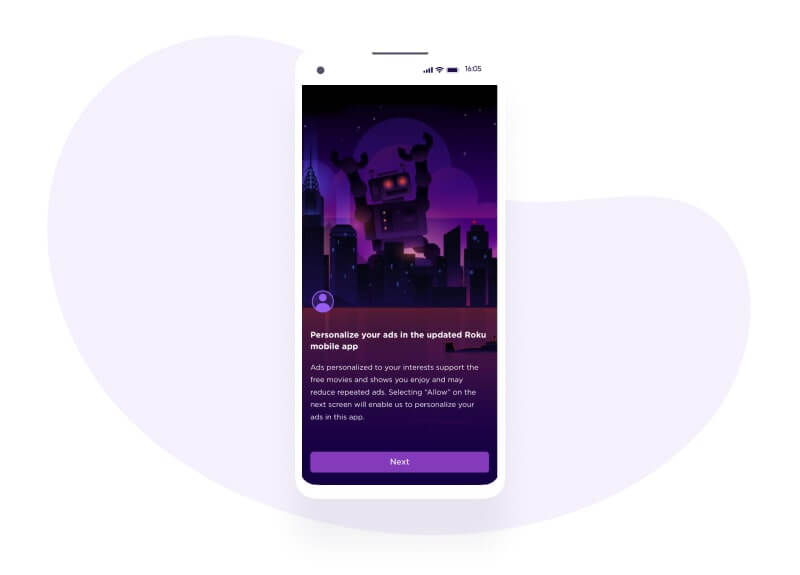
Why it works:
Ever been driven mad by hearing the same ad (or worse, ad jingle) on repeat? You’re not alone. In fact, 69% of viewers say ads on streamed content are too repetitive.
Roku to the rescue. In their pre-prompt, Roku tells users that opting in may actually reduce repetitive ads. It’s a pleasantly unexpected benefit most viewers would appreciate.
What else this pre-prompt gets right:
Roku highlights the inherent “quid pro quo” of free content in exchange for seeing ads. Many apps operate on ad revenue, so it’s a great message to reinforce.
The New York Post reports that opting in isn’t permanent
With a single sentence, the New York Post deflates the concern that opting into tracking might be a permanent condition.
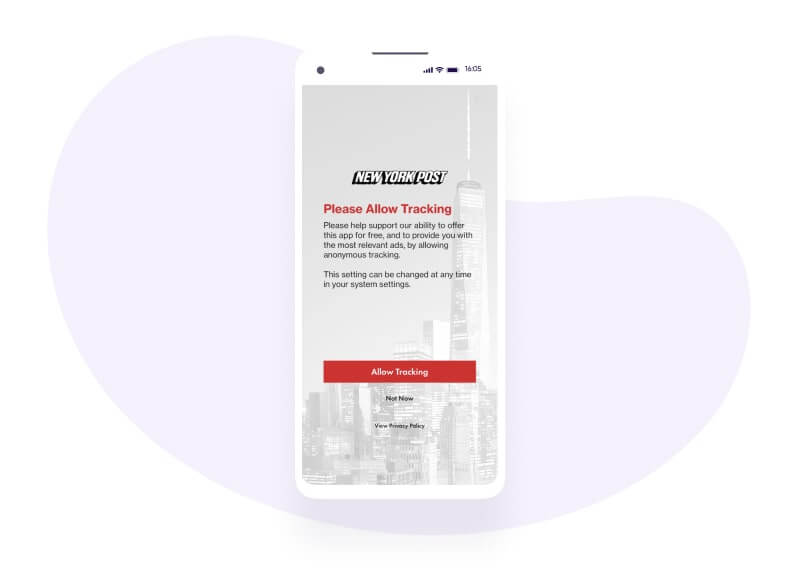
Why it works:
People don’t want to be trapped forever in a decision they made today. It’s why money-back guarantees are scientifically proven to increase conversions.
The New York Post assuages users’ fear of commitment, letting them know they can change their minds about opting-in at any time.
What else this pre-prompt gets right:
Transparency is the name of the game, and The New York Post plays it well by including a link to their privacy policy.
Hopper promises to keep user data safely packed away
Travel app Hopper makes a promise to never sell user data in their ATT pre-prompt.
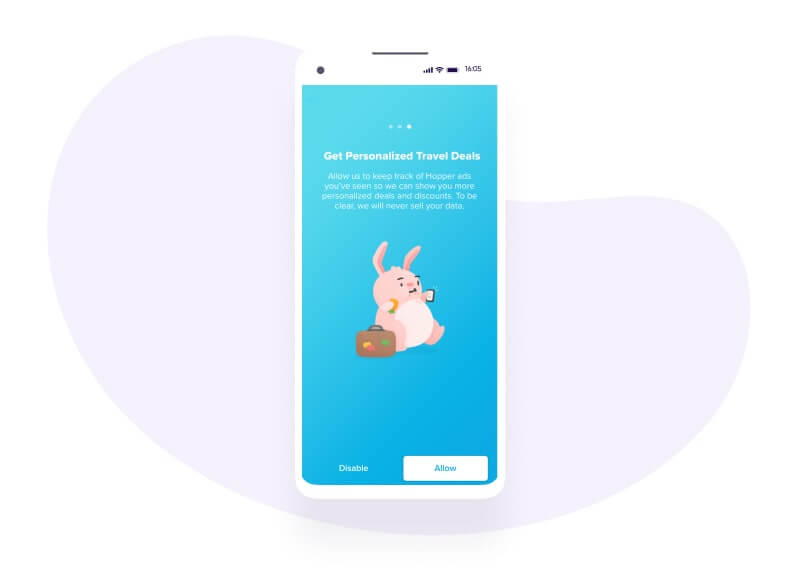
Why it works:
Most people (at least 51%, according to this poll) don’t want their information to be sold. Hopper’s promise to never sell personal data lands perfectly with that cautious cohort of app users.
What else this pre-prompt gets right:
Hopper’s disable/allow buttons are a way to get users to say yes to tracking before the official Apple prompt. It’s like a tracking promise ring that gets a commitment before the big proposal.
Kohl’s doesn’t discount ethics
Kohl’s, a department store known for their frequent sales, shouts out a prestigious ethics award in their ATT pre-prompt.
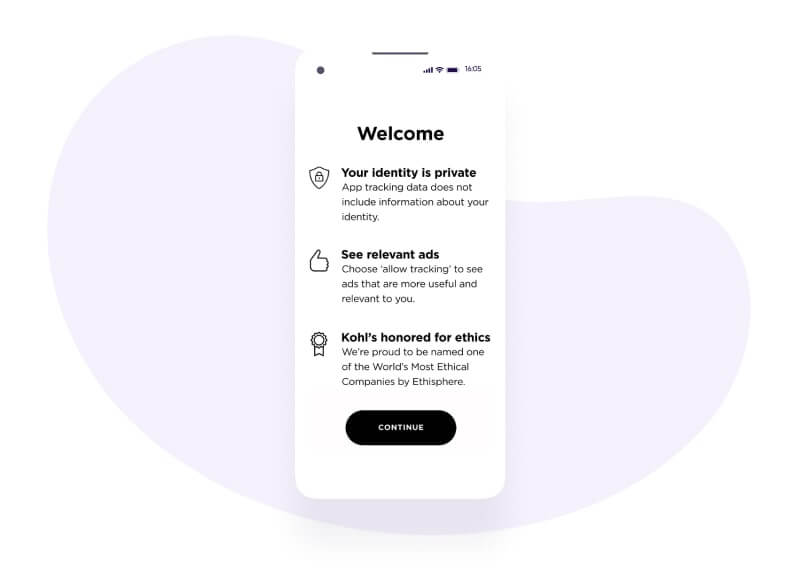
Why it works:
Brand trust matters more than ever, so say 70% of people responding to the Edelman study on the topic.
Kohl’s uses an award as third-party verification that they’re a brand to be trusted, and they do it in their ATT pre-prompt, right when they need that trust the most.
What else this pre-prompt gets right:
Kohl’s clears up the notion that tracking means sharing your identity with apps, reinforcing the idea that user privacy and app tracking aren’t mutually exclusive.
Use pre-prompts to get more ATT opt-ins
To get more ATT opt-ins, developers need to provide users with a compelling reason to be tracked and provide assurances that their data will be handled with care. When considering ways to accomplish that goal, remember that:
- Pre-prompts are popup messages you can show users right before the official ATT prompt.
- Pre-prompts offer more flexibility for copy and design than the Apple ATT prompt.
- The best pre-prompts build trust, educate users, and add a unique brand voice to the request for tracking.
- Although there is no one best practice that applies to all apps, a pre-prompt is a strategic factor to test when trying to increase opt-in rates.



